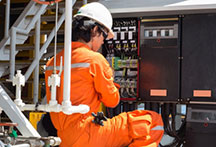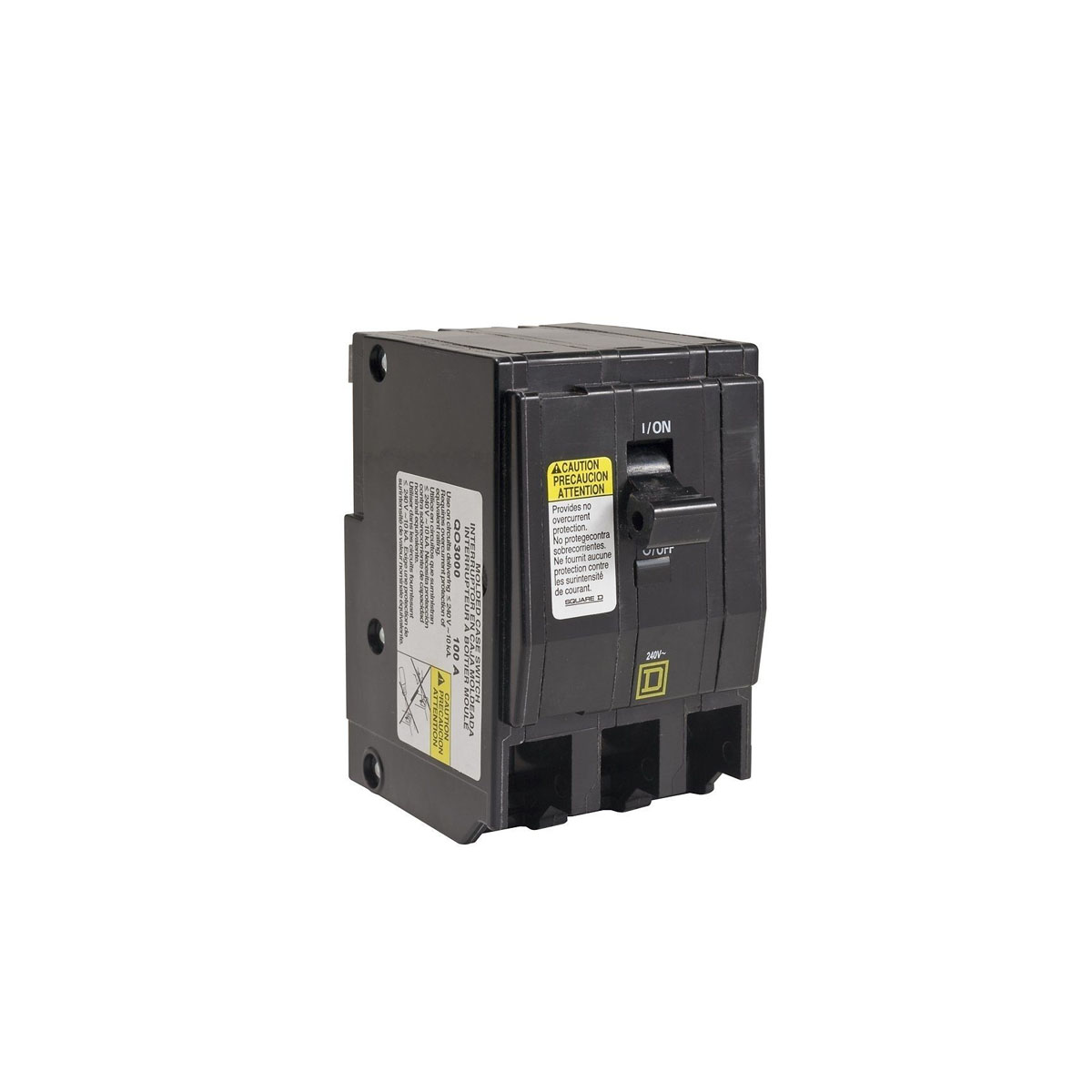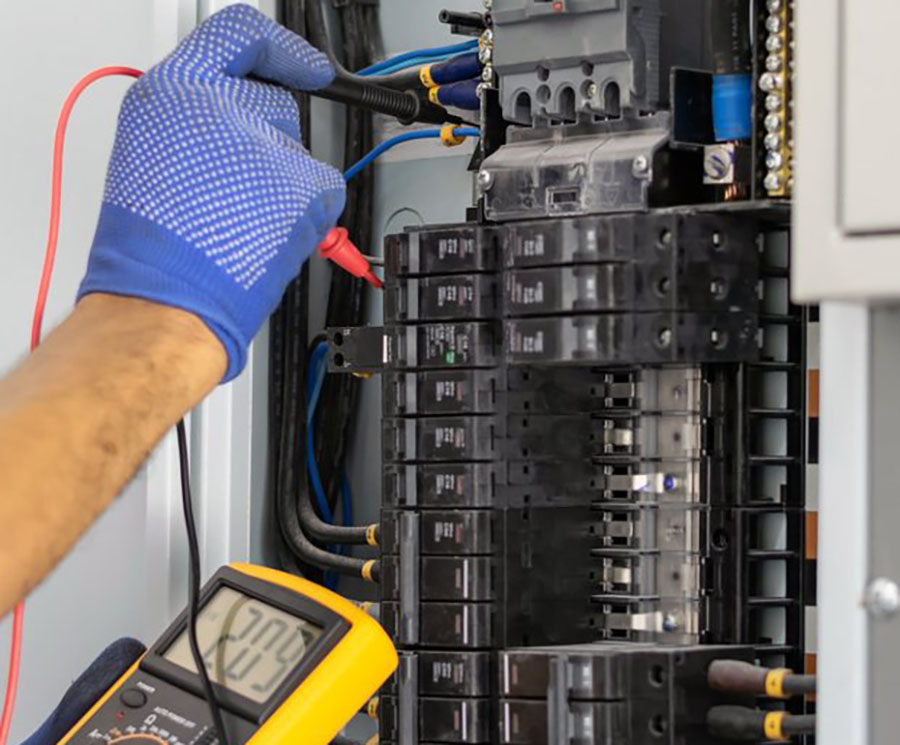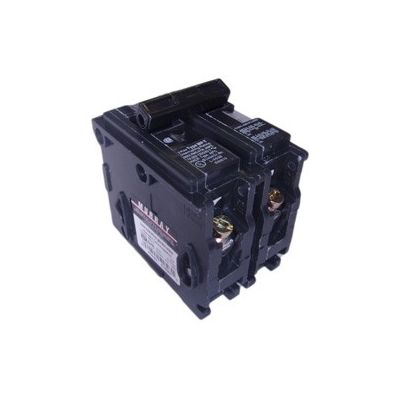Electricity flows safely under normal conditions—it doesn’t generate excess heat and provides a steady stream of power to your devices. However, a short circuit or an overload condition can occur when the current draw exceeds the normal current load, leading to potential electrical hazards without proper protection.
The load and design of the circuit, including relays, conductors, and grounds, determine a safe level of current the device can handle. To prevent the issue of higher than normal current draw, overcurrent protection is necessary.
Overcurrent, overcurrent protection, and the devices that prevent it are essential components for safety and equipment protection. In addition, there are specific devices that prevent overcurrent, keeping your home and electronic devices safe. In this detailed guide, we will walk you through everything you need to know about overcurrent protection.
What is Overcurrent Protection?
Overcurrent protection is the method of implementing hardware and other electrical components to limit or disable current flow. Fuses, circuit breakers, or fusible links are the most commonly used methods to provide overcurrent protection to a circuit or the internal wiring of a piece of equipment.
Breakers, fuses, and fusible links generally function as conductors and add a negligible amount of resistance to the total circuit. As a result, they almost always connect in series with the circuit they are protecting.
When overcurrent events occur, circuit breakers trip while fuses and fusible links blow. These devices do not correct the overcurrent problem; they simply stop the flow of electricity to protect the circuit.
For example, let’s say a breaker in your home is rated for 15 Amps. The breaker will trip if you connect a microwave, hairdryer, and window AC unit needing a combined current draw of 20 Amps. When they all run simultaneously, the circuit has a current load of 20 amps, resulting in an overload of 5 Amps.
In this case, the circuit breaker will continue to trip until you remove one of the devices from the circuit or simply ensure they aren’t creating an overload by running simultaneously.
What are Overcurrent Protection Devices? । Types of Overcurrent Devices
Manufacturers design overcurrent protection devices (OCPDs) to protect a circuit and equipment from overcurrent events. Overcurrents can destroy electronics, melt wires, cause fires, and result in other hazards. OCPDs stop excess current draw by stopping the flow of current entirely. In this way, they protect the equipment from damage and act as a safety mechanism by preventing electrical fires.
Fusible Links
A fusible link is an electrical safety device that provides overcurrent protection to a circuit. A fusible link is essentially a tiny fuse with a short wire piece; usually, four sizes smaller than the wire it protects.
Fusible links are most common in the automotive industry in high-current applications. In most applications, the fusible link is shrouded in fire-resistant insulation with a high-temperature rating. This would reduce hazards if the wire were to get hot enough to melt.
Fuses
Fuses are, by and large, the most common type of overcurrent protection. A fuse contains a metal wire or strip encased in an insulator (usually glass) with two conductors on the ends to complete the circuit. When too much current passes through the fuse, its wire or metal strip melts and stops current flow.
Fuses are sacrificial components, meaning they are destroyed when they experience an overcurrent. Therefore, you have to replace them each time they fail.
Fuses have been around since the advent of electricity, and today there are thousands of different designs for various applications. Here are the common variations:
- Current rating
- Voltage rating
- Breaking capacity
- Response time
- Physical size
- Connector type
Fuses will blow when the current running through it exceeds the rated maximum current rating. Overloading, short circuits, mismatched loads, and device failures are common reasons for a blown fuse.
Circuit Breakers
Like fuses, circuit breakers automatically stop the current flow by physically creating a break in the circuit. But unlike fuses, which melt to break the circuit, circuit breakers switch off when they experience an overload or a short circuit. Therefore, circuit breakers are reusable.
You need to reset most circuit breakers manually. However, there are ones with an automatic reset function. Circuit breakers come in various shapes, ratings, and forms. They range in small sizes for individual household appliances and behemoths that protect high voltage circuits that provide electricity to entire cities.
Some of their common types include:
- Low-voltage
- Medium-voltage
- High-voltage
- Magnetic
- Magnetic-hydraulic
- Thermal-magnetic
- Solid-state
- Shunt-trip
- "Smart"
There are thousands of different circuit breakers, and they all provide overcurrent protection.
Circuit breakers detect fault conditions through either the heating or magnetic effects of electric current or other means. For example, breakers for large currents and high voltages employ protective relay pilot devices to sense fault conditions such as overload, short circuit, ground fault, and more.
When a circuit breaker detects a fault, it opens the circuit, preventing current flow across it. In your breaker box, most household circuit breakers are spring-loaded and mechanically trip with this stored energy. Circuit breakers could also use compressed air or thermal expansion caused by the overcurrent to open the contacts.
Small circuit breakers, like the ones in your home, have to be manually reset with a push lever or switch. The reason they are hard to push back open is that you are re-compressing the mechanical spring. On the other hand, large circuit breakers, like those in an industrial setting, use solenoids to trip the breakers with motors to restore the mechanical energy in the tripping springs.
Vital Role of Circuit Overcurrent Protection
Overcurrent protection is necessary for every electrical circuit. If a circuit does not have overcurrent protection, there could be severe repercussions. For example, overcurrent can destroy electronic devices without protection and lead to electrical fires, shock, and electrocution.
As such, all electrical circuits and equipment should have overcurrent protection devices to interrupt and open circuits when overcurrent events occur. As a result of proper protection, you can significantly reduce the risk of damage and electrical hazards.
Difference Between Overcurrent Protection and Overload Protection
Current overload is a type of overcurrent. Therefore, overload protection is a type of overcurrent protection as well.
Overcurrent protection is a safety mechanism that prevents currents above the acceptable current rating of the circuit or equipment. Overcurrent protection is generally achieved with magnetic circuit breakers or fuses and operates instantaneously. Overcurrent instances can occur due to short circuit events or an overload event.
Overload protection protects against running overcurrent, which could cause overheating of the protected equipment or circuit. The time it takes for an overload protection circuit to trip is negatively correlated with the increase in current. So the higher the load, the shorter amount of time it takes to trip. For example, a higher overload current will cause the overload protection relay to trip faster than a lower overload current.
Some circuit breakers and relays have both overload and overcurrent protection. This means they have both a magnetic circuit breaker that trips when there is an overcurrent and a thermal element that causes the breaker to trip when there is a current overload.
How Does Overcurrent Protection Work?
High fault currents can occur when electrical systems fail that would otherwise cause equipment damage and fires if not protected by an overcurrent protection device. The simplest and most common type of overcurrent protection is fuses.
How do Fuses Work?
When the current running through a fuse gets too high, the inner conductor will get very hot and melt. When the conductor melts, it interrupts the current flow. As such, fuses are single-use devices, and you must replace them after an overcurrent event.
The maximum current that fuses can interrupt is limited; it can arc across the melted connection if the current is too high. For that reason, electrical designers and electricians only use them in low voltage and some medium voltage systems.
Fuses are a great, low-cost way to provide overcurrent protection to equipment and circuits but aren’t suited for high voltage situations.
How do Circuit Breakers Work?
Most high voltage systems implement circuit breakers along with transformers and relays to provide overcurrent protection.
Here are the basics of how these work together:
- The circuit breaker and current transformer are installed in the circuit in series
- The current transformer steps down the line current to a smaller current (secondary current) and feeds it to a relay
- When the secondary current exceeds the relay’s pickup current for a specific period (delay time), the relay will trip and cause the circuit breaker to break the current path.
The intensity of the pickup current is what determines the specific delay time. The relationship of the delay time to the pickup current determines when the relay will trip. They have an inverse relationship which is defined by the tripping characteristic curve. In basic terms, lower currents take longer to trip, and higher currents take less time to trip.
Examples of Overcurrent Protection Circuit
If you use electricity, there are plenty of examples of overcurrent protection circuits in your everyday life. They range from the electrical wiring in your home to the electrical controls in your car and even your phone’s circuit board.
Overcurrent protection is in almost every device that uses electricity. Here are some examples:
- The fuse box under a panel of the dashboard of your car
- The breaker box in your home
- The GFCI outlets in your bathrooms and kitchen
- The wall plug to charge your phone
- Many places at a power plant
- Power substations
- Many areas along power transmission lines
Conclusion
Overcurrent protection is a safety feature of almost all electronic devices. They protect circuits and equipment from all types of overcurrent situations, including short-circuits, ground faults, and current overloads. Fusible links, fuses, and circuit breakers are the most common types of overcurrent protection devices (OCPDs).




